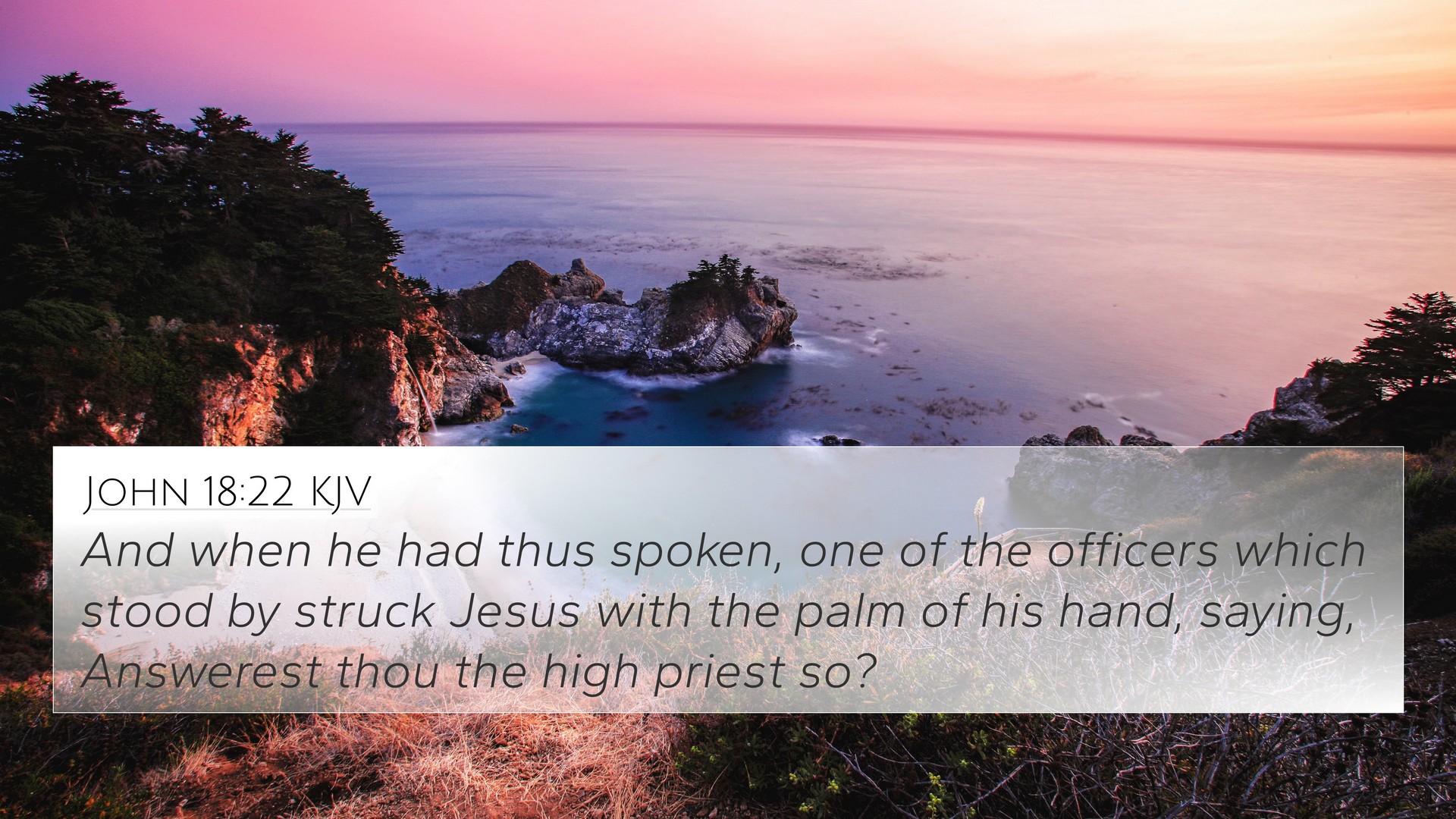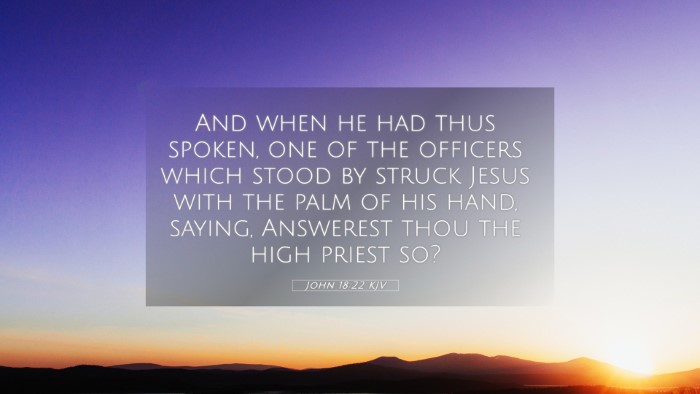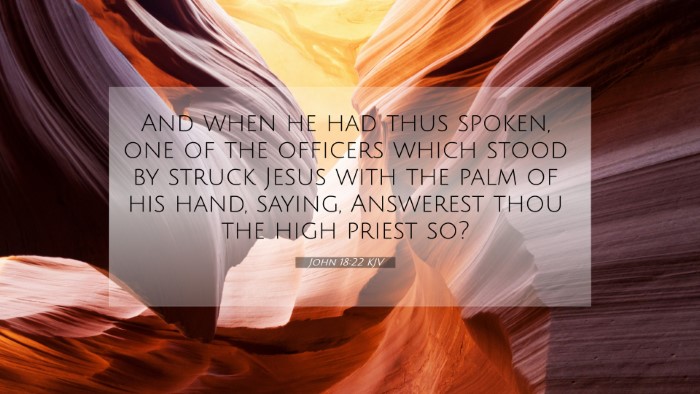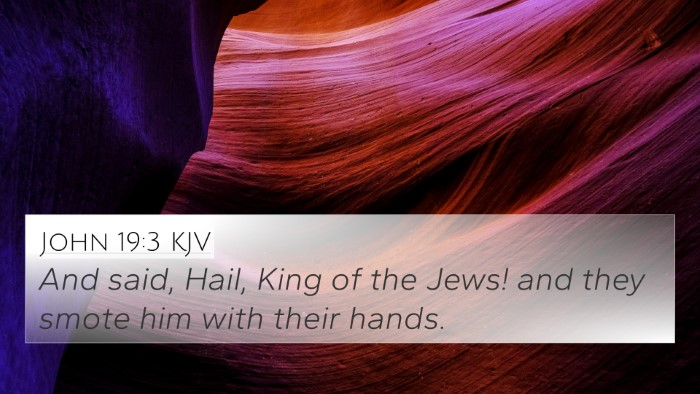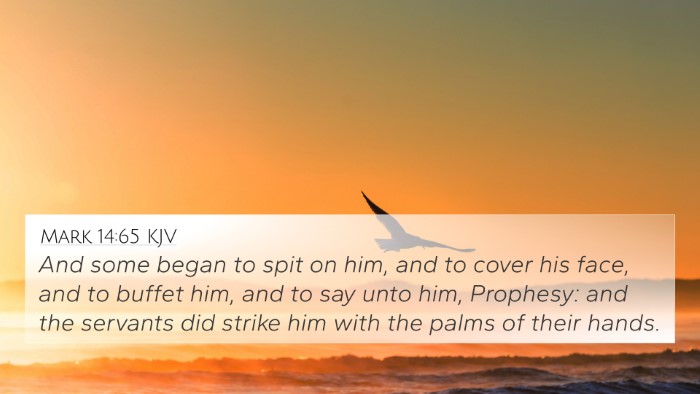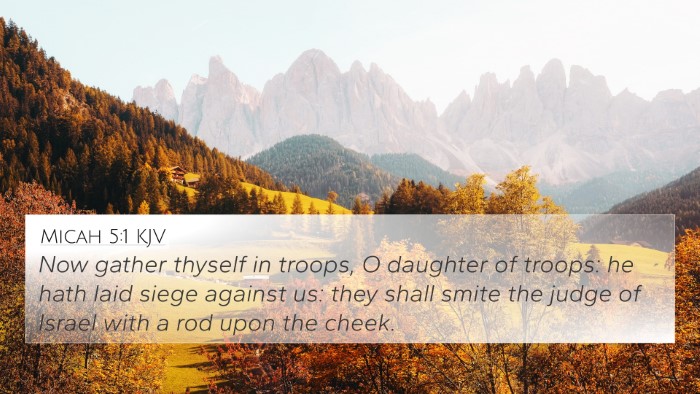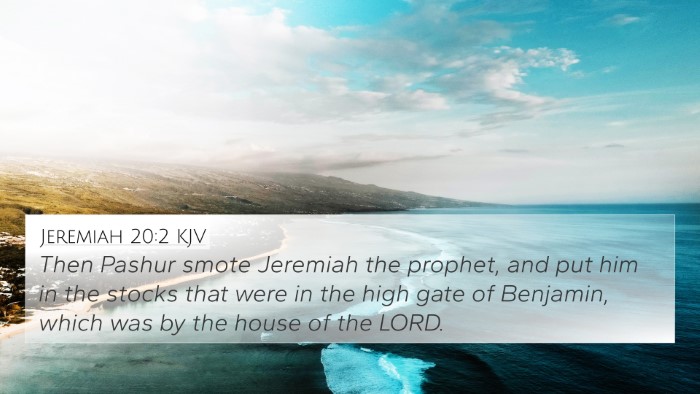Understanding John 18:22
John 18:22 reads: "And when he had thus spoken, one of the officers which stood by struck Jesus with the palm of his hand, saying, Answerest thou the high priest so?" This verse captures a moment of intense confrontation during Jesus’ trial, showcasing both the hostility directed towards Him and the fulfillment of previous prophecies concerning His suffering.
Contextual Analysis
The events leading up to this verse are crucial. Jesus has just been questioned by the high priest Annas regarding His disciples and doctrine. His firm yet respectful response provokes an unlawful reaction from an officer present. This verse illustrates the climax of tension between sacred authority and the divine truth embodied in Jesus.
Commentary Insights
- Matthew Henry: Henry emphasizes Jesus’ dignity throughout the trial, noting that He remains calm under provocation. The officer's action represents the unjust treatment of Christ, showcasing the brutality of religious leaders who felt threatened by His authority.
- Albert Barnes: Barnes points out that the high priest's question was intended to trap Jesus. The reaction of the officer reflects the disdain for Christ’s teachings, underlining the unholy alliance of political and religious authority against Him.
- Adam Clarke: Clarke reflects on the scripture’s fulfillment of prophecy. He connects this event with Isaiah 50:6, where the Messiah is foretold to endure physical abuse without retaliation, illustrating His obedience and willingness to suffer for humanity’s redemption.
Thematic Connections
This verse ties into broader biblical themes such as injustice, suffering, and Christ's unwavering commitment to His mission. It highlights the opposition faced by Jesus not just from secular rulers but also from those in spiritual authority.
Cross-References
To deepen your study, here are Bible verses that relate to John 18:22:
- Isaiah 50:6: Prophecy of the suffering servant and His abuse.
- Luke 22:63-65: The mocking of Jesus by the guards.
- John 19:1: Jesus being scourged as a precursor to His crucifixion.
- Matthew 26:67-68: The abuse and mockery Jesus endured during His trials.
- 1 Peter 2:23: A reflection on how Jesus responded to suffering without threats or insults.
- Hebrews 12:3: Encouragement to consider the hostility Jesus faced from sinners.
- Acts 4:25-28: The fulfillment of psalmic prophecy concerning Christ's suffering.
Connecting Themes in Scripture
John 18:22 serves as a pivotal moment that highlights the stark reality of Jesus’ life and ministry among those who opposed Him. These themes of suffering and injustice resonate throughout the scripture:
- The Suffering Servant: Relating Isaiah 53 to the New Testament's portrayal of Jesus' passion.
- Faithfulness in the Face of Trials: Comparing Jesus with Job’s perseverance amidst suffering (Job 13:15).
- The Power of Silence and Suffering: Through Jesus’ example untangling how His silence during accusations becomes a significant testimony (Proverbs 18:13).
Using Cross-References
Understanding John 18:22 within a broader scriptural context reinforces its message. Engaging in cross-referencing Bible study enhances comprehension and illustrates thematic continuity. Here are some tools for Bible cross-referencing that can aid in deeper scriptural analysis:
- Bible Concordance: To locate verses quickly.
- Bible Cross-reference Guide: Helps find related verses easily.
- Bible Chain References: Organized themes connecting scripture passages.
- Comprehensive Bible Cross-reference Materials: For in-depth studies.
Concluding Thoughts
John 18:22 reminds believers of the cost of following Christ and the extent of His suffering. Through examining connections and themes in scripture, one can better appreciate the profound implications of His trials. Such an understanding encourages reflection on our own responses in the face of adversity and opposition.
